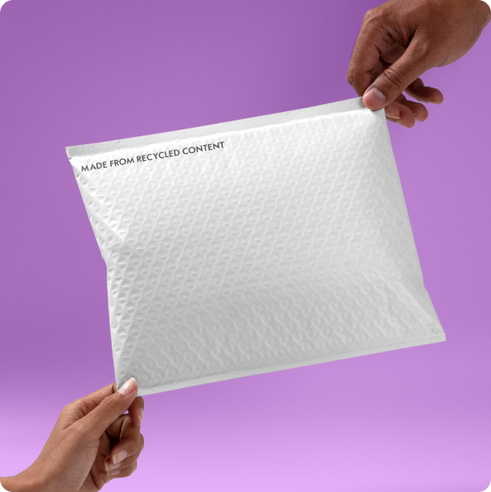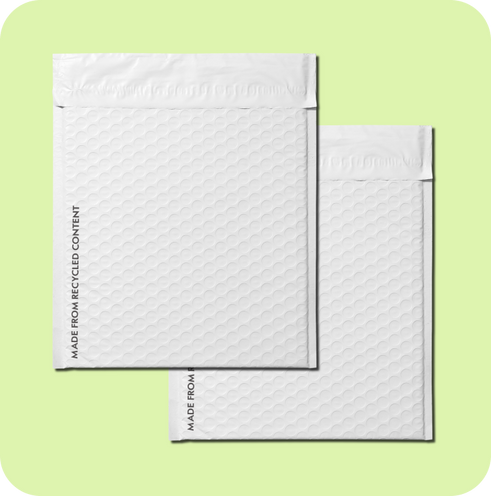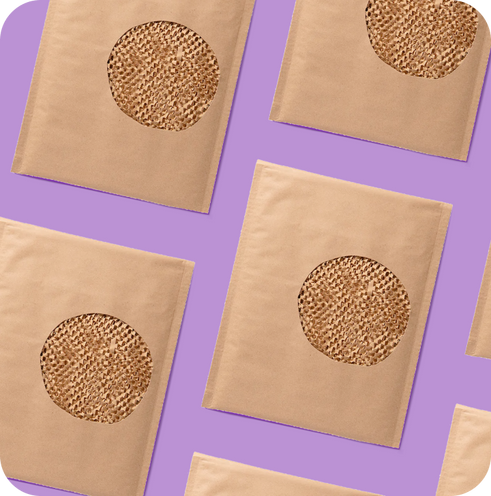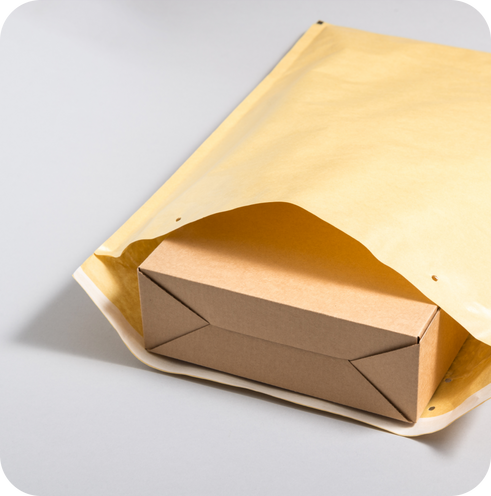Packaging 101: The Complete Guide
- Packaging 101
- Types of Packaging
- Aseptic Packaging
- Blister Packaging
- Biodegradable Packaging
- Bulk Packaging
- Carbon Neutral Packaging
- Circular Packaging
- Clamshell Packaging
- Compostable Packaging
- Cornstarch Packaging
- Corrugated Packaging
- Discreet Packaging
- Ecommerce Packaging
- Flexible Packaging
- Frustration Free Packaging
- Retail Packaging
- Secondary Packaging
- Smart Packaging
- Sustainable Packaging
- What is a PR Package?
- What is a Poly Mailer?
- Packaging Design Ideas
- AI Packaging Design
- Bakery Packaging Ideas
- Bath Bomb Packaging Ideas
- Bath Salt Packaging Ideas
- Body Butter Packaging Ideas
- Body Oil Packaging Ideas
- Body Scrub Packaging Ideas
- Brownie Packaging Ideas
- Cake Packaging Ideas
- Cake Pop Packaging Ideas
- Candle Packaging Ideas
- Candy Packaging Ideas
- Canva Packaging Design
- Chocolate Packaging Ideas
- Cinnamon Roll Packaging Ideas
- Clothing Packaging Ideas
- Coaster Packaging Ideas
- Coffee Bag Design Ideas
- Cookie Packaging Ideas
- Cosmetics Packaging Design
- Cotton Candy Packaging Ideas
- Cupcake Packaging Ideas
- DIY Packaging Ideas
- Dog Treat Packaging Ideas
- Food Packaging Ideas
- Empanada Packaging Ideas
- Etsy Packaging Ideas
- French Fries Packaging Ideas
- Frozen Food Packaging Ideas
- Hair Extension Packaging Ideas
- Handbag Packaging Ideas
- Jewelry Packaging Ideas
- Keychain Packaging Ideas
- Lash Packaging Ideas
- Lip Gloss Packaging Ideas
- Macaron Packaging Ideas
- Minimalist Packaging Ideas
- Mug Packaging Ideas
- New Employee Welcome Kit Ideas
- Packaging Colors
- Packaging Inserts Ideas
- Packaging Logo Design
- Packaging Typography
- Perfume Box Design Ideas
- Pizza Box Design Ideas
- Popcorn Packaging Ideas
- Scarf Packaging Ideas
- Skincare Packaging Design Ideas
- Soap Packaging Ideas
- Sock Packaging Ideas
- Sticker Packaging Ideas
- Sunglass Packaging Ideas
- Sustainable Packaging Ideas
- Tea Packaging Ideas
- Wax Melt Packaging Ideas
- Weed Packaging Ideas
- T-Shirt Packaging Ideas
- Wine Packaging Design Ideas
- What is a Packaging Engineer?
- Types of Packaging Materials
- Chipboard vs Cardboard
- Compostable Packaging Materials
- Alternatives to Plastic Packaging
- Edible Packaging Materials
- Food Packaging Materials
- Are Poly Mailers Recyclable?
- How to Recycle Cardboard Boxes
- How to Recycle Packaging Materials
- Medical Device Packaging Materials
- Mono Material Packaging
- Pharmaceutical Packaging Materials
- Plastic Food Packaging
- Protective Packaging Materials
- Reusing Packaging Materials
- Types of Packaging Foam
- Void Fill Packaging
- What is Chipboard?
- What is Kraft Paper?
- Offset vs Digital Printing
- RGB vs CMYK Printing
- Screen Printing vs Digital Printing
- Screen Printing vs Sublimation
- What is a Dieline in Packaging?
- What is Die Cutting?
- What is Digital Printing?
- What is Flexographic Printing?
- What is Glassine Paper?
- What is Offset Printing?
- What is Spot UV Printing?
- Why is 300 DPI Good for Printing?
- How to Estimate Shipping Costs
- How to Pack Glass for Shipping
- How to Mail a Bubble Mailer
- How to Make a Shipping Label
- How To Measure Box Dimensions and Sizes
- How to Ship Alcohol
- How to Ship Artwork
- How to Ship Books
- How to Ship a Cake
- How to Ship Candles
- How to Ship Chocolate
- How to Ship Clothes
- How to Ship Cookies
- How to Ship Food
- How to Ship a Hat
- How to Ship Jewelry
- How to Ship a Laptop
- How to Ship Perfume
- How to Ship a PC
- How to Ship Perishable Food
- How to Ship Plants
- How to Ship Shoes
- How to Ship Vinyl Records
- Packaging Symbols
- Shipping Large Items
- What is a Delivery Exception?
- What is Shipping Insurance?

Britt Martin, Arka's Partnerships lead, blends e-commerce expertise with sustainability advocacy, nurturing startups as a Founder in Residence at NYU.
Key Benefits of Carbon Neutral Packaging
Firstly, using carbon-neutral packaging means that you can contribute to environmental conservation. This is done by offsetting emissions and using packaging that contains sustainably-sourced and eco-friendly materials. You can reduce your carbon footprint in the process and cut back on activities that generate high emissions levels.
Secondly, using carbon neutral packaging can boost the reputation of your brand. Many consumers are more conscious of climate change and sustainability these days, so they like to see their favorite brands taking eco-friendly steps and contributing to helping the environment. Using carbon neutral packaging for your products can help boost your brand’s sustainable reputation and leave an impression on your consumers.
Using carbon neutral packaging can save you money and be much more cost-effective. This is because carbon neutral packaging is smart packaging. It is designed to store more products and fit into more spaces, which cuts down on storage, shipping and transportation costs.
In addition to this, carbon neutral packaging is compliant with regulations. It is normally certified with PAS 2060, which is internationally recognized for carbon neutrality by the BSI.

Credits: Cloud The Label, Instagram
Types of Carbon Neutral Packaging
Here are the different types of carbon neutral packaging.
Glass
Glass can be reused and recycled without using any of its properties. Even though it is easily breakable, it’s a much better alternative to using plastic, and by reusing it, you can stop it from going to landfill.
 Credits: PMV Chamara
Credits: PMV Chamara
Aluminium
Aluminium works well as a carbon neutral packaging material because it provides an effective barrier. With aluminum, less is more, so you don’t need to use as much or waste too much, lowering carbon emissions.

Paper and cardboard
Paper and cardboard are carbon-neutral materials because they can be reused and recycled, reducing the likelihood of going to landfill. Also, using recycled paper and cardboard made from sustainable materials such as bamboo is better because it prevents more trees from being cut down.

Credits: Kelli McClintock
Plastic
Plastic is one of the worst pollutants on the planet. However, if you use polypropylene, this type of plastic has a lower carbon emissions and reduces your carbon footprint.

Credits: Agenlaku Indonesia
How to Implement a Carbon-Neutral Packaging Process?
To implement a carbon-neutral packaging process for your business, it’s important to follow these necessary steps.
Understand the impact of deploying carbon-neutral packaging
When implementing sustainable strategies, it’s important to be mindful of the impact of deploying carbon-neutral packaging.
To do this, it’s important to take responsibility for your steps. You must have plans to offset carbon emissions as part of the process. For example, is it possible to consider using electric vehicles when deploying carbon neutral packaging via transportation?

Credits: Mildlee
Set your goals and strategy
To be successfully sustainable, it’s important to set your goals and establish a strategy to stay focused and hold yourself and your team accountable. It’s also a great way to assess and evaluate your emissions and to see what’s working and what could be improved within your business practices.
Make sustainability part of your brand’s values
These days, many companies have incorporated sustainability policies and values as part of their brands, so make sure you do the same. Within your policies and values, you need to make clear:
• Your stance on sustainability.
• Your goals and targets to reach carbon neutrality.
• Your strategies and processes that are in place to help you reach net zero.
Research the machinery
Machinery and other aspects of production generate high carbon emissions, so this is something that needs to be evaluated. Opt for efficient and energy-saving machinery and examine whether there are better ways to create your products.
Consider using plastic as well
We know plastics are bad for the planet. You can use bioplastics or polypropylene as part of your business because these plastics have lower carbon emissions, reducing your carbon footprint.
Cooperate with net-zero couriers
If your business delivers products and services to your customers’ doors, you probably use courier services, so consider using net-zero couriers. Net-zero couriers use electric vehicles to deliver goods and services, which is much more friendly to the environment and doesn’t pollute the air, and it can be a cost-effective solution.

Credits: MealPro
Educate your customers on how to recycle or repurpose your packaging
When it comes to being more sustainable, knowledge is power, so educate your customers on how to recycle or repurpose your packaging.
Recycling and repurposing items can be complex for many people, so be sure to add simple steps to help your customers use your packaging in an eco-friendly way.
Measure the impact
To hold yourself accountable, you need to measure the impact of your sustainability efforts. You can calculate your business’s carbon footprint by conducting an energy audit or using a climate/carbon calculation to check carbon emissions and energy consumption and to review best practices and ways to improve.
Final Thoughts
There are many ways to be more sustainable and reduce your carbon footprint, and one of the ways to do this is to use eco-friendly and carbon neutral packaging.
With Arka, you can design eco-friendly packaging, boost brand awareness and attract consumers. Our eco-friendly custom mailer boxes and shipping boxes help brands increase awareness and boost their image while attracting new customers.
FAQs about Carbon Neutral Packaging
Here are a couple of frequently asked questions about carbon neutral packaging.
Are there any certifications for carbon-neutral packaging?
Yes. Thanks to organizations such as the Carbon Trust and the BSI, you can find carbon-neutral certifications and verification for packaging. The BSI provides PAS 2060 to products and packaging. This is the internationally applicable specification for carbon neutrality status.
Can small businesses adopt carbon-neutral packaging?
Absolutely! Small businesses can adopt carbon-neutral packaging by adopting carbon-neutral practices that reduce the carbon emissions generated by your business that your business can’t avoid. You can do this by:
• Carbon offsetting emissions by planting trees and investing in renewable energy and sustainable environmental projects.
• Cutting down on waste.
• Avoiding non-recyclable, non-biodegradable, and non-compostable materials.
• Using energy-saving and efficient manufacturing and supply chain practices.
• Using electric vehicles.
• Measuring your carbon footprint and setting your goals to help you reduce this, plus identifying the sources of the biggest carbon emissions in the business (e.g., transport.)
• Using recyclable, biodegradable, and compostable packaging.
In addition to this, carbon-neutral packaging can be much more cost-effective in the long run because unsustainable practices are costly and wasteful.









